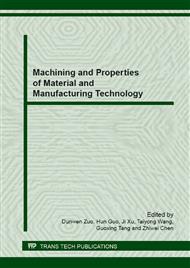p.81
p.91
p.97
p.103
p.109
p.117
p.123
p.129
p.135
Topology Optimization in Support of Spaceborne Device Based on Variable Density Method
Abstract:
Support is not load bearing components, but also carrier of other component. To reduce the valid load, mass of the support should be low down under the condition of enough stiffness and strength. Topology optimization is employed here to solve the problem. The finite model must be built up according to the basic structure of analysis object in topology optimization. The supports are typical box-style part with thin-wall. Thus, solid model is adopted in ANSYS, and the element shell93 is employed here. Definition of optimization function based on linear-static analysis was employed here. Take maximum flexibility as the constrain conditions of the structure. And the optimality criterion (OC) method was adapted to the problem due to it is suitable for the problem which target is volume. Define the base plate, face and back of the support as the topology area separately. Main part of support is optimization with the variable density method. The results before and after the optimization are compared. When the topology form is unknown, the best topology relation of the structure in the initiate design stage of the whole product has very important meanings.
Info:
Periodical:
Pages:
109-113
Citation:
Online since:
July 2013
Authors:
Keywords:
Price:
Сopyright:
© 2013 Trans Tech Publications Ltd. All Rights Reserved
Share:
Citation:


